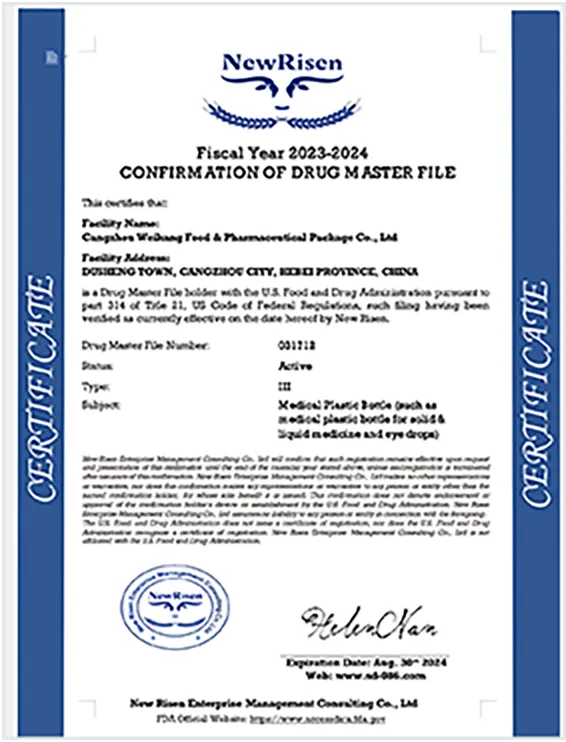Reagent Bottle Pricing Trends in the Laboratory Supply Market
The Economics of Reagent Bottle Pricing A Comprehensive Analysis
In the world of laboratory supplies, reagent bottles play a pivotal role in ensuring the efficient storage and handling of chemical substances. As specialized containers, reagent bottles come in different sizes, materials, and designs to cater to various laboratory needs. However, the pricing of these essential items can vary significantly, influenced by several factors that are critical for both laboratory managers and procurement officers to understand.
Factors Influencing Reagent Bottle Prices
1. Material Composition Reagent bottles are typically made from materials such as glass, polyethylene, or polypropylene. Glass bottles are often preferred for their chemical inertness, transparency, and durability, but they tend to be more expensive due to manufacturing costs. In contrast, plastic bottles are generally more affordable and lightweight but may not be suitable for all types of reagents, especially those that are corrosive or reactive. The choice of material directly impacts pricing and should align with the specific needs of the laboratory.
2. Size and Capacity Reagent bottles come in various capacities, ranging from small vials containing just a few milliliters to large bottles holding several liters. Larger bottles often have a higher price tag due to the increased quantity of raw materials and the greater complexity involved in their production. However, purchasing in bulk can lead to significant cost savings, making it essential for laboratories to consider their usage rates and storage needs when selecting bottle sizes.
3. Brand Reputation The reputation of the manufacturer can influence the price of reagent bottles. Established brands known for their quality and reliability often charge a premium. Labs need to balance the cost against the potential risks associated with using lower-quality bottles, such as contamination or breakage, which could have far-reaching implications in research outcomes and compliance with safety standards.
4. Design Features Some reagent bottles come equipped with special features such as dropper tops, integrated pouring spouts, or safety seals. These additional functionalities can enhance usability and safety in the lab environment but may also contribute to higher costs. It's crucial for buyers to assess whether these features are necessary for their specific applications or if basic designs will suffice.
reagent bottle price

5. Supply Chain Dynamics Market forces such as supply chain disruptions, raw material shortages, and transportation costs can affect the pricing of reagent bottles. Recent global events, including the COVID-19 pandemic, have highlighted the vulnerabilities within supply chains, leading to fluctuations in prices due to scarcity or increased demand. Laboratories must stay informed about market trends and potential shortages to make educated purchasing decisions.
The Importance of Cost-Benefit Analysis
When evaluating reagent bottle prices, laboratories should conduct a comprehensive cost-benefit analysis. This analysis involves not just looking at the initial purchase price but also considering factors such as longevity, reusability, and the potential costs of reagent wastage due to inadequate storage solutions. For instance, investing in higher-quality glass bottles may seem costly initially, but if they prevent breakage and contamination, they could save money in the long run.
Furthermore, laboratory managers should also consider their procurement strategies. Group purchases or long-term contracts with suppliers may yield significant discounts, further enhancing budget efficiency. Establishing relationships with reputable suppliers can lead to improved service and pricing flexibility, which is beneficial in maintaining ongoing laboratory operations.
Conclusion
The pricing of reagent bottles is a multifaceted issue influenced by a variety of factors, including material choices, size, brand reputation, and current market conditions. Understanding these elements is essential for laboratory managers and procurement officers to make informed decisions that balance cost with quality and safety. Ultimately, a well-considered approach in selecting reagent bottles can contribute not only to the efficiency of laboratory operations but also to the integrity of scientific research.
-
Aesthetic Makeup Spray Bottles | Fine Mist Empty RefillableNewsAug.19,2025
-
White Plastic Veterinary Vaccine Vials | Lab Liquid BottlesNewsAug.18,2025
-
Plastic Medicine Liquid Bottle: Secure Flip Top Drug VialsNewsAug.17,2025
-
Durable 250ml Blue Plastic Vaccine Vial for Lab & Vet UseNewsAug.16,2025
-
Sterile Virus Sample Tubes: Secure & Reliable Specimen CollectionNewsAug.15,2025
-
White 250ml Plastic Vaccine Vial for Lab & Vet MedicineNewsAug.14,2025
























